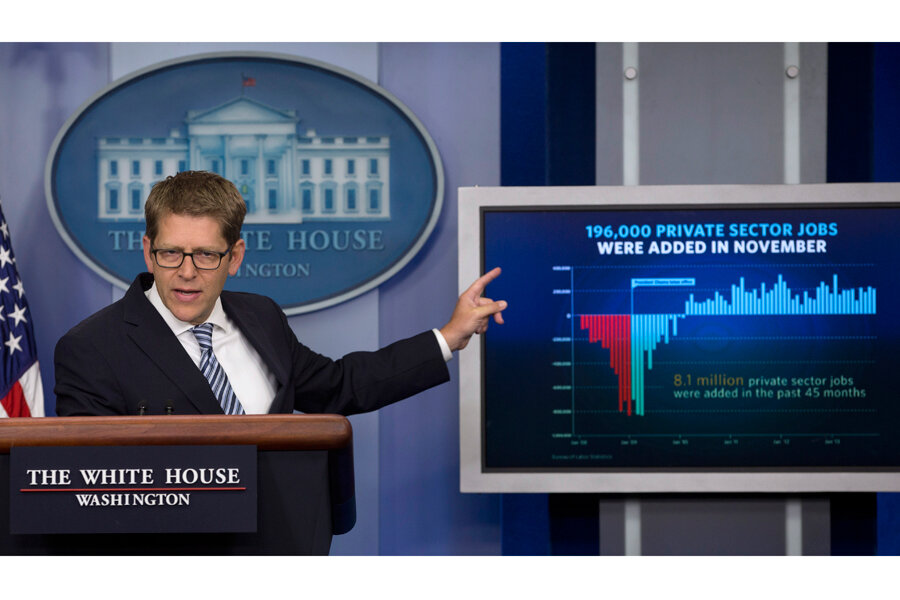Unemployment rate drops: how to read Friday's jobs report
Loading...
| Washington
The monthly jobs numbers are among the most important and anticipated economic measures produced by the federal government. On Fridays prior to their release, reporters, economists, and number nerds gather on Twitter and other social media and count toward the magic hour of 8:30 a.m. Eastern time as if they’re football fans awaiting Game Day kickoff.
Then “Boom!” the Bureau of Labor Statistics (BLS) releases the report, and immediately experts are racing through it to divine its meaning. The top-line unemployment rate seems clear enough, and usually it’s indicative, but then all those folks on CNBC start rattling off sub-numbers to make subsidiary points. They’ll say stuff like “non-farm seasonally-adjusted retail payrolls are flat, so the markets will freak out like tweener girls!” and so on.
After that they start throwing around “U-6” and “monthly revisions” and arguing about what the Fed will do, so you switch to PBS in search of old British sitcoms. Is the jobs report really that complicated?
Well, it’s got a lot of things in it. The actual report is some 40 pages of data. But here’s our guide to a trick (or two) that will help you make sense of the numbers and sound like an expert to boot.
We’ll start with Friday's report on November’s job situation. Unemployment dipped down to a five-year low of 7 percent. That’s good – it shows that hiring has picked up and remained strong since mid-summer. It’s better than many experts expected. Americans with jobs are working more hours and their wages are going up a bit.
“The numbers amount to confirmation that the jobs recovery remains underway, is well-entrenched, and is solid and steady,” concludes Neil Irwin, economic czar of the Washington Post’s Wonkblog.
But here’s the trick: the unemployment rate does not really measure the total number of out-of-work Americans.
It’s a solid number in the sense that it is a consistent measure that over time provides a good idea of the state of the US economy. But it counts a shifting population of Americans who do not have a job, but haven’t been out of work for an extended period of time, and are still looking, since they haven’t gone back to school or joined the military or taken a seasonal job at Williams-Sonoma because they just got laid off.
It’s true. The BLS unemployment measure does not include people who have been out of work for 12 months. It does not count “discouraged” workers who have given up looking for a job. It does not count people who are underemployed, such as PhD microbiologists working as nannies. (Yes, “Doonesbury”, we’re looking at you.)
The BLS does have a broader measure of unemployment that includes these people. To us, it gives a better picture of the social impact of joblessness throughout the economy. This is the “U-6” unemployment number. For November, it stood at 12.7 percent, down from 13.2 percent in October.
So, getting better. But not great by any means.
One last pro tip: The labor force participation rate is fun to look at, too. OK, maybe not “fun,” but instructive.
That’s because lots of new workers enter the job market every month. Some 125,000, in fact. So just looking at the number of jobs created does not tell you everything that’s happening. The labor force participation rate shows how well US job creation is keeping up with this influx of newbies while providing new opportunity for the veteran unemployed.
November’s participation rate was 63 percent, up from 62.8 percent in October. But this number is still at a low point in comparison to recent years. A year ago it was 64 percent, for example.
The bottom line there may be that the US economy is still struggling to lift out of the morass of joblessness created by the Great Recession.








